Chasing waterfalls and sunsets (and vampires) in Olympic National Park and Forks
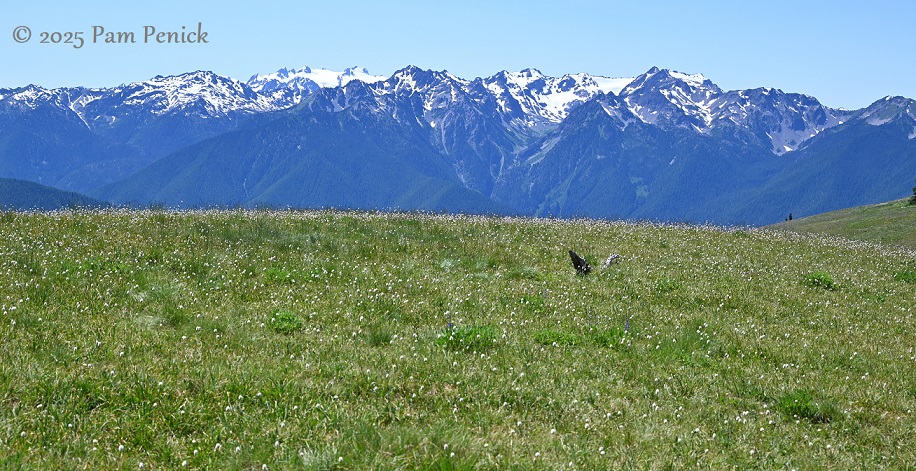
Last July, I flew from Austin to Seattle the week before the Puget Sound Fling. With well-planned timing, my husband was descending from the summit of Mount Rainier the same day my plane soared over its snow-capped peak. That evening we met up to begin a national parks tour across Washington.
Olympic National Park
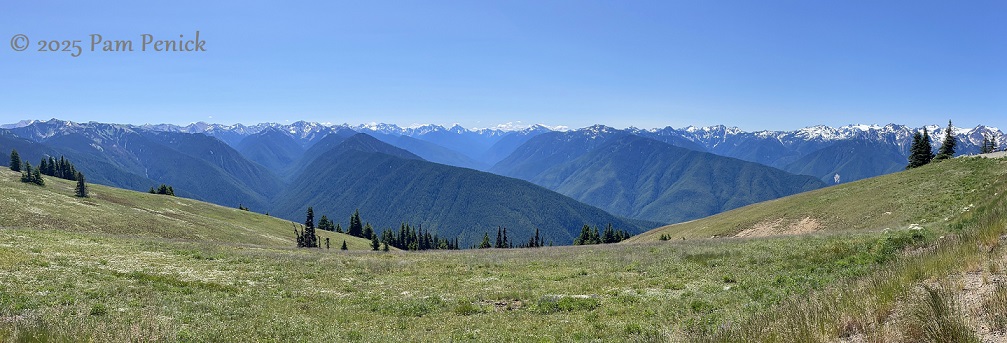
Washington boasts three national parks: Olympic, North Cascades, and Mount Rainier. We started our tour by heading west to Olympic National Park‘s glacier-topped mountains, mossy rain forests, and cliff-plunging coast. At the Hurricane Ridge Visitor Center, which felt high enough to skip a rock across the Olympic Mountains’ blue ridges, we enjoyed a meadow view with our picnic lunch.
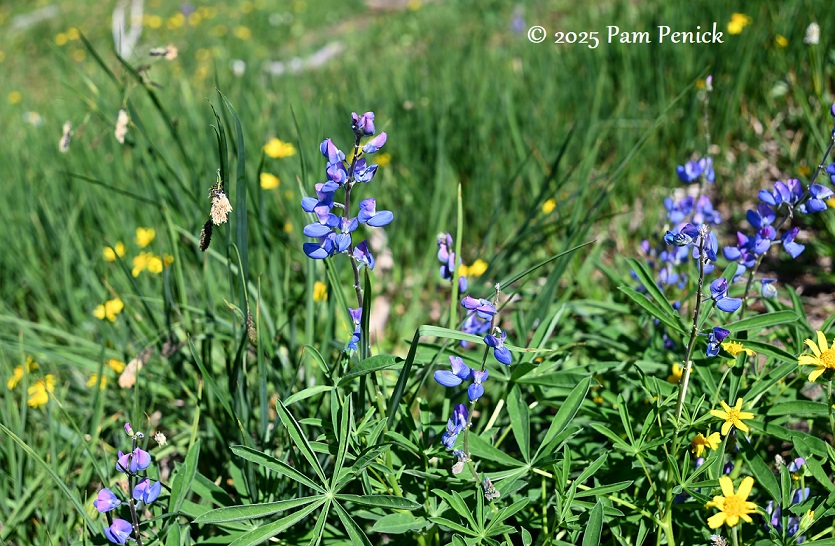
Lupines were flowering in the meadows — so much later, in mid-July, than the Texas lupines (bluebonnets) of late March and early April.
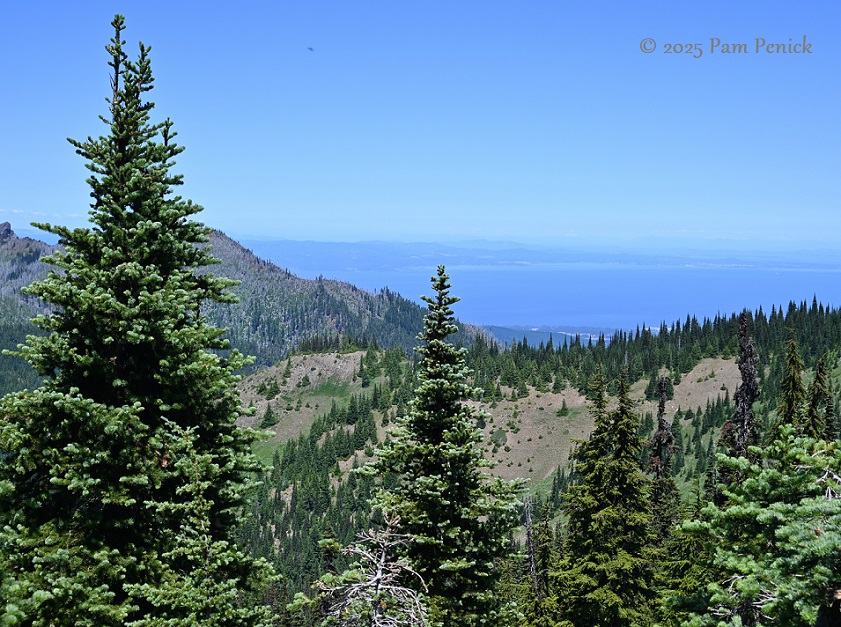
Only 33 miles away, the Pacific Ocean blurs its denim blue with a cloud-smeared sky.
Sol Duc Falls
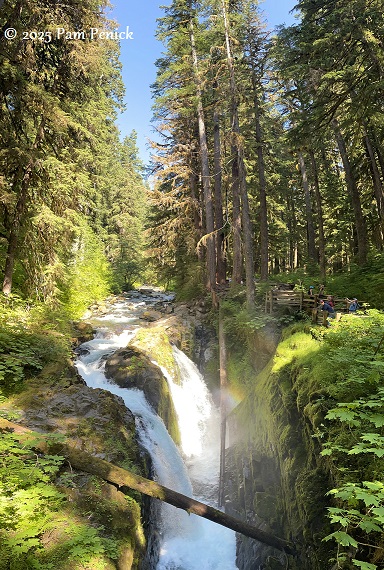
We hiked a few easy trails, including one to see Sol Duc Falls.
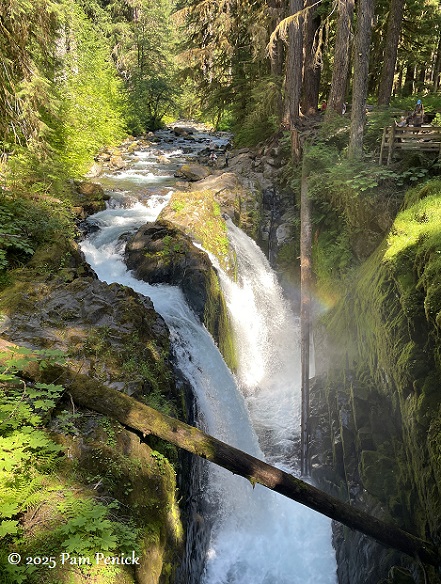
Three chutes of whitewater fall about 40 feet into a narrow canyon clothed with bright-green moss.
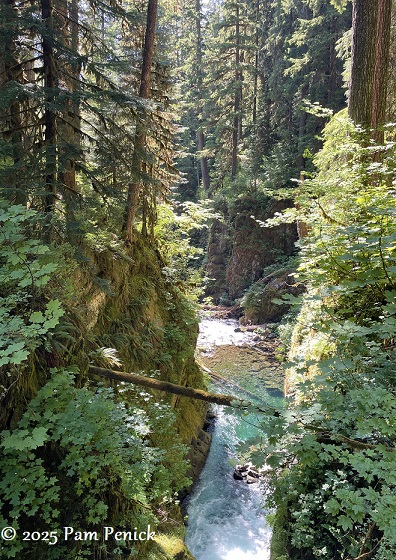
The water foams between bluffs topped with arrow-straight firs or spruces.
Cape Flattery
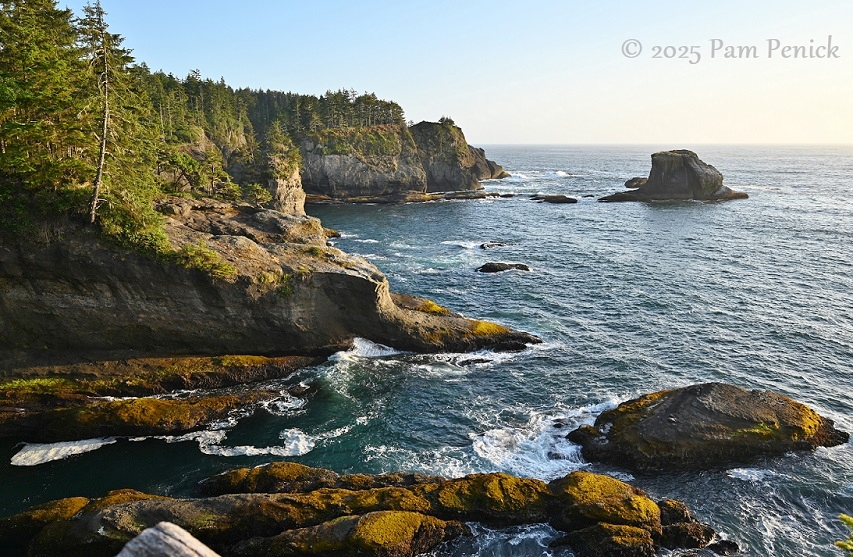
After a fried seafood dinner at Warmhouse Restaurant in Neah Bay, we drove to the Cape Flattery trailhead to watch the sunset. For those who enjoy visiting places that are the “most” of something, Cape Flattery is not to be missed. It’s the northwesternmost point in the contiguous United States, and the farthest west you can be in the U.S. to see the sun go down unless you trek to Alaska or Hawaii.
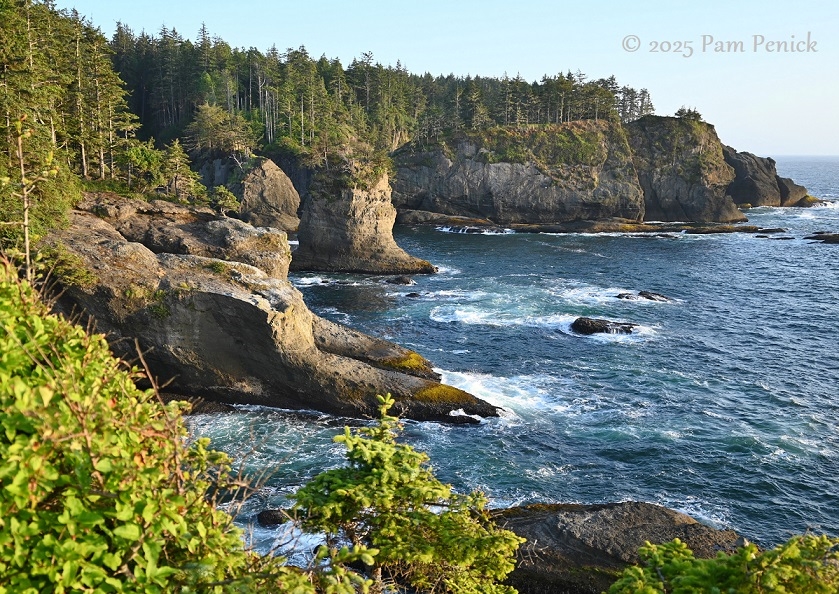
A 1.5-mile out-and-back trail, mostly boardwalk under the gloom of tall spruces, takes you to dramatic bluffs that shear off into the sea.
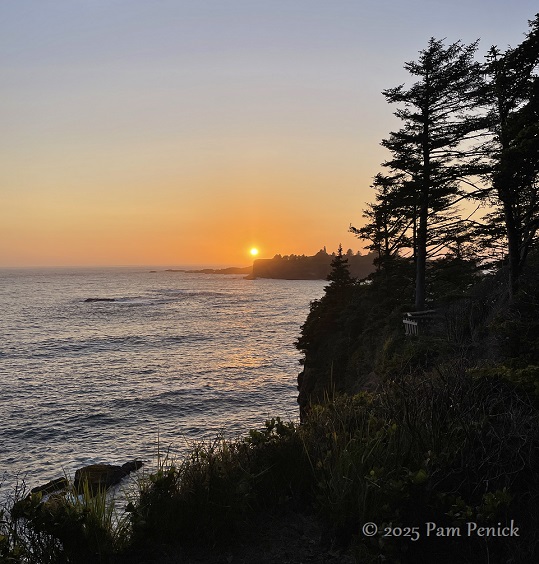
Well after 9 pm, the sun began its descent into the Pacific.
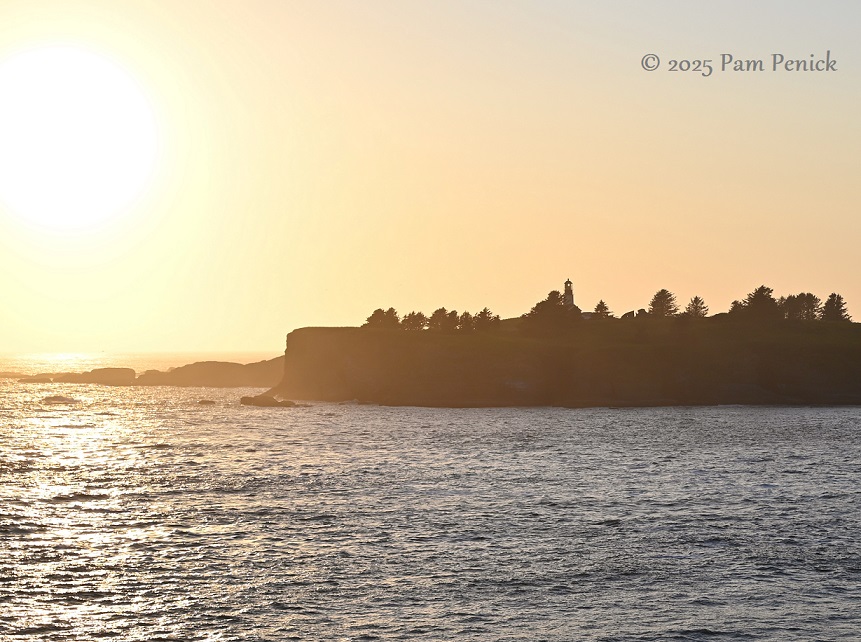
From the farthest overlook, you can see the Cape Flattery Lighthouse on Tatoosh Island.
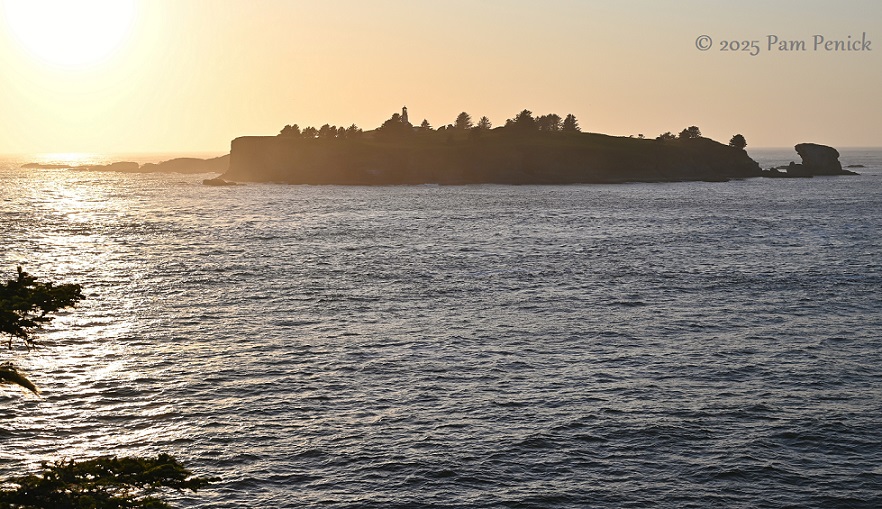
OK, I guess that would be the westernmost point in the contiguous U.S. to watch the sunset, but it’s inaccessible to the public. It makes for a pretty view though.
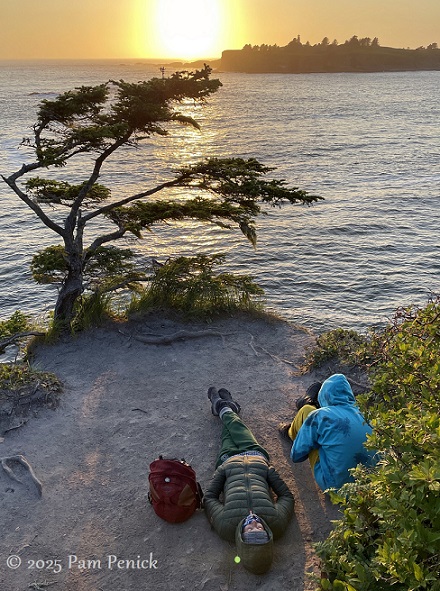
Sunset watchers on the bluff’s “prow” below the viewing platform

People have been coming here for the views for thousands of years.
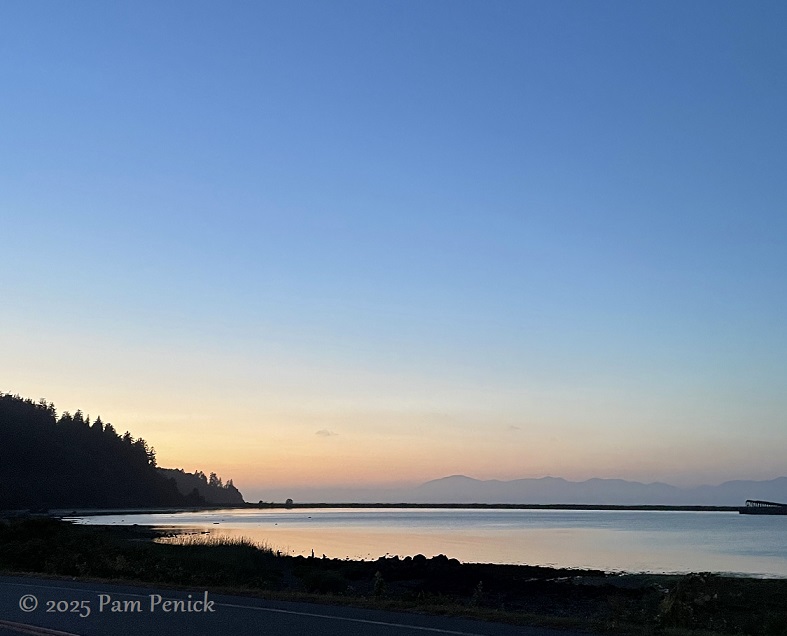
Light lingers in the sky this far northwest, and even after a post-sunset hike back to our car we enjoyed this twilight view of water and mountains.
Forks, Washington
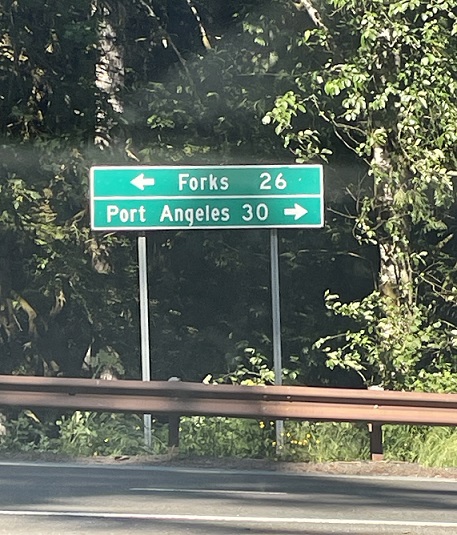
Speaking of twilight, Twilight the vampire series is a big deal on the Olympic Peninsula. We spent the night in Forks, home to the fictional teenager Bella and Edward, her vampire love. The next day we poked into a few shops in town and were greeted by racks and shelves of Twilight merch.
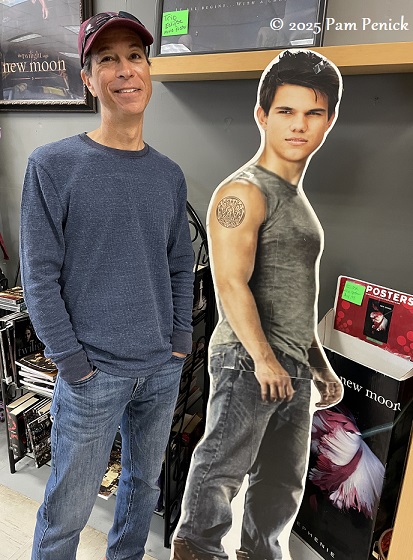
Not sure if he’s Team Edward or Team Jacob
Hoh Rain Forest
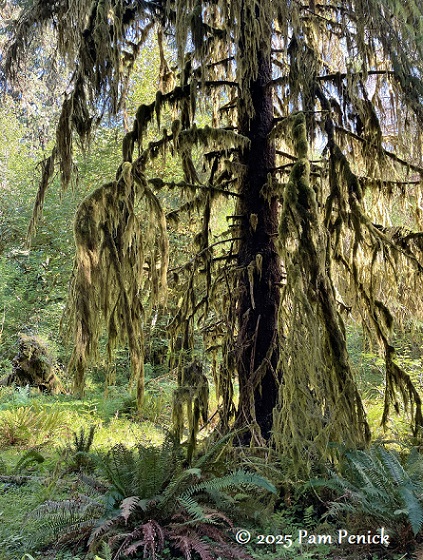
To ensure we could get into Hoh Rain Forest, an extremely popular area of Olympic National Park, we arrived at the entrance before 8 am. We got in easily, but by the time we left a few hours later, cars were lined up at a standstill outside the gate. I’ve read it’s more scenic and much less crowded to visit at a rainier time of year, when the mosses are plumped up. But I still enjoyed the scenery of moss-dripping trees and Jurassic-sized ferns on several easy hikes we did.
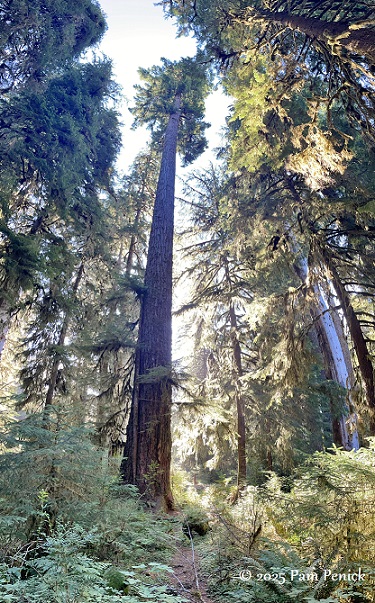
Trees here seem tall enough to tickle the soles of clouds.
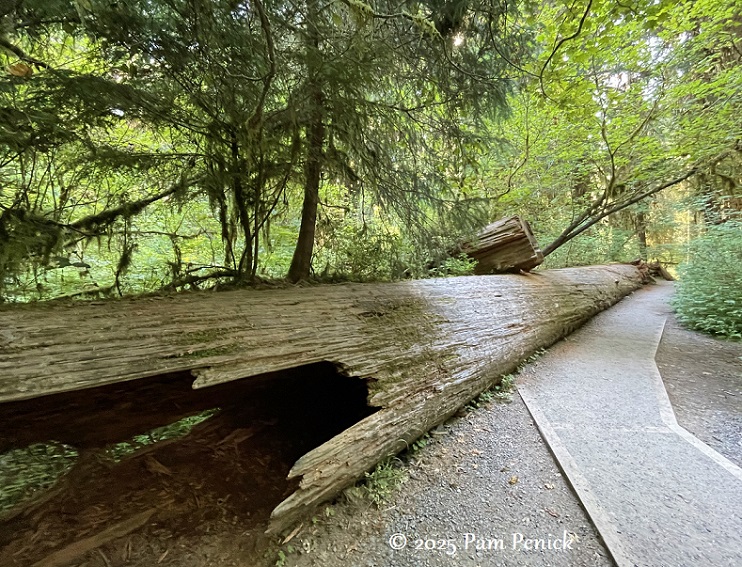
Their corpses make shoulder-high walls along paths.
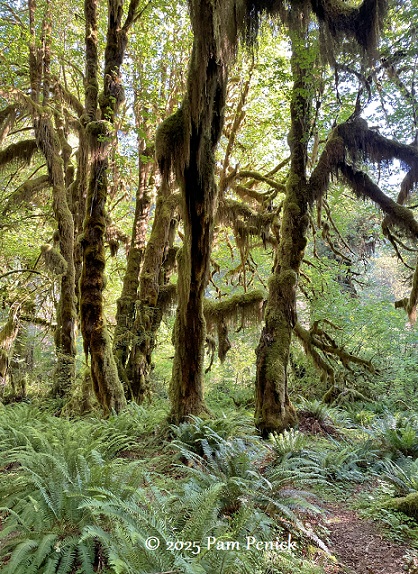
Moss-shaggy tree monsters stalk among the ferns.
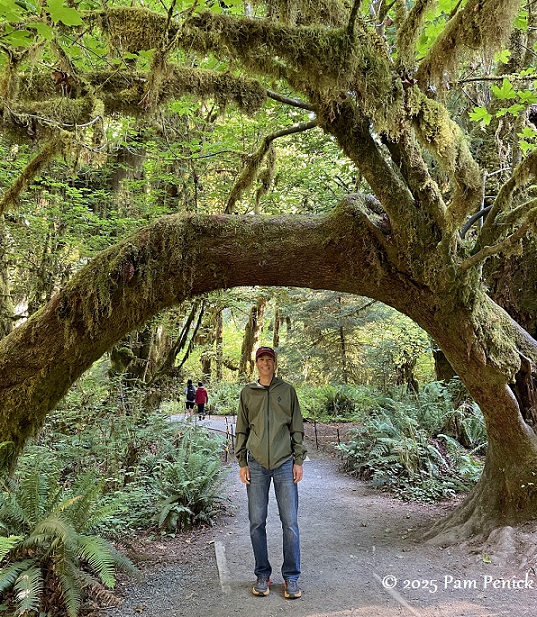
Others do limber backbends.
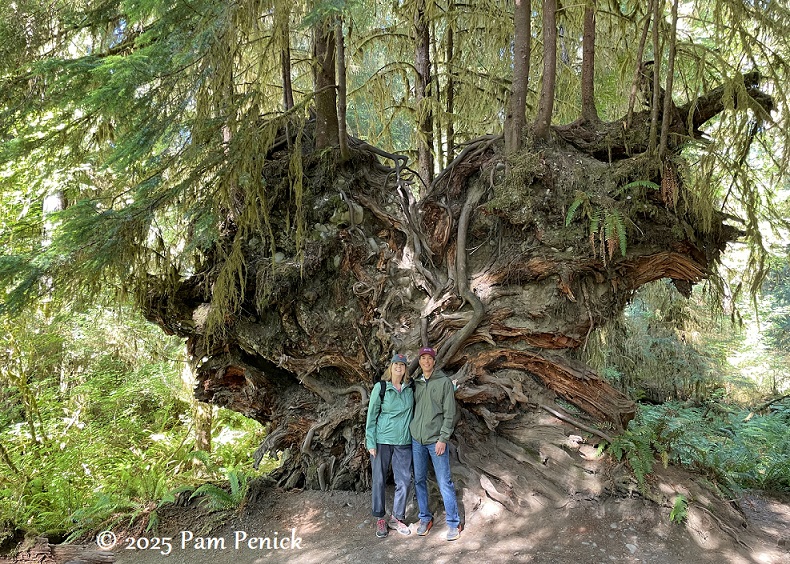
One fallen giant displays a heart-shaped root ball 16 feet tall. Along its top ridge, younger trees nourished by the decaying wood of the nurse tree grow head-and-shoulders above the surrounding forest.
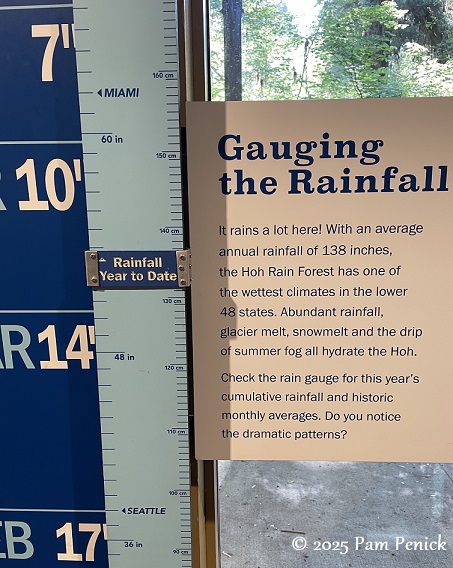
Hoh Rain Forest lives up to its name with 138 inches of annual rainfall. That’s 11.5 feet of rain each year!
La Push Beach
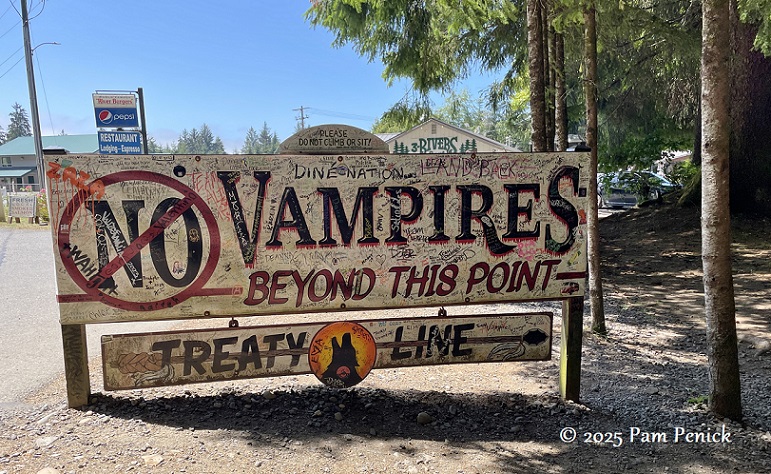
Our last stop on the Olympic Peninsula was La Push, home to the werewolf Jacob in Twilight, where vampires are forbidden. A sign marks the fictional treaty line.

We parked at La Push Beach for a final stroll before heading to Tacoma.
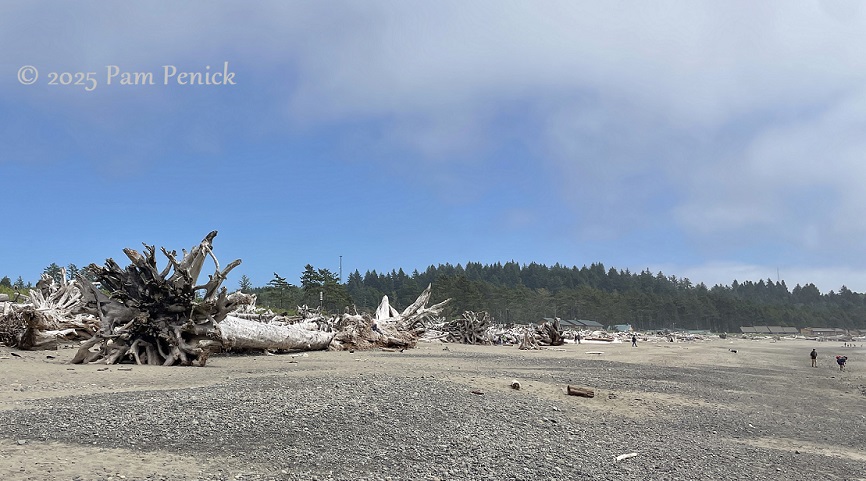
I was amazed by the massive tree skeletons that had washed up as driftwood on the beach. Can you imagine the storms that carry these wave-scoured giants back to shore?

The roots of this one stand about 15 feet tall.
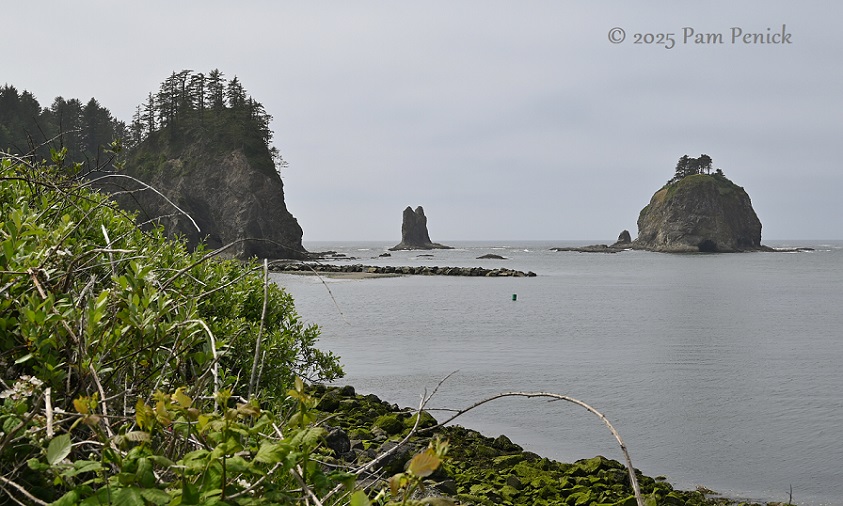
Future driftwood grows on sea stacks in the water.
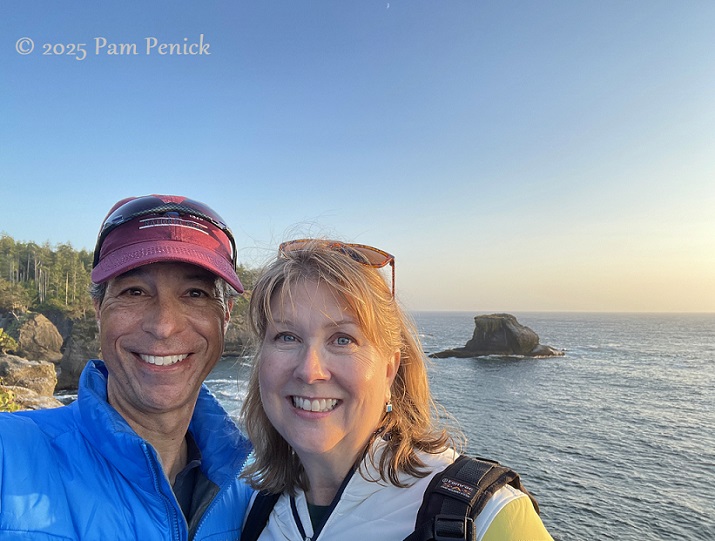
What a stunning place.
Up next: Turquoise lakes of glacier melt in North Cascades National Park.
I welcome your comments. Please scroll to the end of this post to leave one. If you’re reading in an email, click here to visit Digging and find the comment box at the end of each post. And hey, did someone forward this email to you, and you want to subscribe? Click here to get Digging delivered directly to your inbox!
__________________________
Digging Deeper
Come learn about gardening and design at Garden Spark! I organize in-person talks by inspiring designers, landscape architects, authors, and gardeners a few times a year in Austin. These are limited-attendance events that sell out quickly, so join the Garden Spark email list to be notified in advance; simply click this link and ask to be added. Read all about the Season 8 lineup here!
All material © 2025 by Pam Penick for Digging. Unauthorized reproduction prohibited.


Beautiful scenery, Pam. Thanks for sharing your trip. I was curious about the vampire reference and expected bats 😉
Hah! All of the bats I see are in Central Texas. Hmm, maybe the vampires have moved here. 😉
I am so happy that you had such a beautiful place to get away to.
I love Rain Forests. I always feel like I am in another world when entering that realm. It is another world. You can almost see the wood sprites and feel the spirits of the trees.
The rain forest in Olympic was indeed that magical. Sprites and spirits all around!
My husband and I hiked to Sol Duc Falls this past August. And tried out the hot springs. I am from the Pacific Northwest (the wet side). Although I have few people connections there anymore, the mountains and forests are always with me.
I didn’t know about the hot springs, Brenda. What a gorgeous place you’re from. I always enjoy my visits to the PNW.
That’s a nice adventure in NW Washington. I think I’d like to spend about a month there, on a retreat, far away from everyone for a while. Seems so peaceful! I had no idea Twilight was set in that region (obviously not much of a Twilight fan here). Fried seafood sounds good right about now.
A retreat in Olympic would be restful. It’s a place of stunning natural beauty. I read the Twilight books and enjoyed them for what they are. It’s amazing to see what an impact that series continues to have on tourism in the tiny towns of Forks and La Push.
Aren’t those views of the Pacific and Olympic peninsula amazing? I feel fortunate to live close enough to it and to the rain forests: they are only a short drive away. It must be shocking to arrive from dry Texas to Forks, possibly the wettest town in WA state.
It is a far different world from Texas, for sure, although here in Austin we’re not super dry, with 35 inches annually — not that different from Seattle, I think? The difference is that your region is summer-dry/winter-wet, and our rain falls in quick bursts throughout the year. I’m fascinated by how rainfall patterns, plus temperature extremes, impact regions that share the same hardiness zone — 9a for both Austin and Seattle.
Now Forks, as you say, is insanely rainy with 10 or 11 FEET a year!
Anyway, I went off on a tangent. 🙂 You are fortunate indeed to live in such a beautiful part of the world. I always love visiting the Olympic Peninsula!
That 16’ root ball ! We have smaller versions of those here in the Texas Hill Country and I have always admired them. They say that settlers used them to make corrals. If I had a way to move them from friend’s ranches, I would do the same. They are so beautifully sculptural.
You clearly need a skid steer, Paula. Or to find someone who does. I’d love to see what you’d come up with!
I don’t even want to imagine the storm that could toss those giants back up on the shore. And I can’t imagine those levels of annual rainfall either. Amazing and gorgeous country. Is there any type of terrain/climate that the USA doesn’t have to offer?
Probably something — Sahara-like desert? — but we’re awfully lucky to have such a diverse and beautiful country to explore. Our national parks, especially the grand ones in the West, draw people from all over the world. We enjoy meeting fellow travelers along the way.
We had a Tatiana on Blotanical?
One of the first blog posts I remember reading was hers, about this PNW honking great driftwood!
Tatyana — she’s still blogging! https://tanyasgarden.blogspot.com/